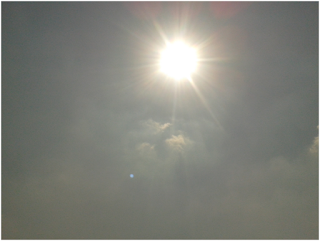From
Veganuary could be a stepping stone to
more sustainable eating
What if I said you could switch to a diet of tasty,
healthy food, which could reduce your weight and lessen your impact on the
environment, more so than if you stopped driving and flying? What if this meant
you would be eating no eggs, dairy, meat or fish?
This January thousands of people have joined the Veganuary campaign, stepping
up to the challenge of giving veganism a go for 31 days.
Traditionally the vegan message has been focused on ending cruelty to animals,
but veganism achieves much more. There are many health and environmentalbenefits
to be found in adopting meat-reductionist diets and thinking more about what we
eat. With Veganuary we wanted to take a relaxed, non-judgmental approach,
asking people to take part whatever their motivation. Our goal is to provide a
supportive stepping stone towards adopting a vegan diet for January, and
hopefully to shift the diets and perceptions of thousands of people.
We've been overwhelmed by the reaction. In just two
months, the Veganuary
Facebook community has grown to 5,700, with no major advertising spend
or media coverage. There's a real desire by participants to document and share
their experiences online; they support one another daily as they learn, as well
as accessing experienced vegans who are on hand for advice. Taking part this
year, Emma Spradbury said: "I've enjoyed the Veganuary site and followers'
support. I'm pleased to now be more educated and in a position to counter many
of the negative and stereotypical comments about veganism."
Veganuary founders Matthew Glover and Jane Land
wanted to create a campaign with mass appeal. "We chose to focus more on
the health aspect of veganism and how great the food can taste, rather than on
the ethics and environmental issues. In many respects this goes against the
grain of why we became vegans, but we've tried to 'put ourselves in the shoes
of non-vegans' and consider what might motivate them to consider a vegan
diet." Matthew continued, "However, the ethical arguments are still
within the campaign materials when people are ready for them."
Part of the inspiration to approach behavioural
change in this way was a talk by animal-rights campaignerTobias Leenaert. His insight was
that health and taste were more-common entry points to meat-reduction than the
environment and animal welfare. But that over time people who started doing a Meat Free Monday or a Veggie Thursday often
gradually became more interested in the animal welfare aspects.
We believe it's time for veganism to go mainstream,
but the fact is that all our futures must involve less meat. Livestock
emissions currently account for 14.5% of global greenhouse gases, greater than transport's 13%
contribution. As the global population grows to 9 billion people who desire
more meat in their diet as they prosper, we cannot afford equivalent emissions
rises. We are already getting used to increasing droughts, water shortages
lower crop yields and general food insecurity. This all means less food to feed people and
livestock. Not to mention growing dietary concerns and an increasingly global
obesity crisis.
What we know is that people can be healthy and enjoy
a vegan diet. And we know it offers a solution to many of the complicated
problems the world faces, fewer greenhouse gases, less
industrial waste, healthier people, savings on food, and more grain to feed
people not animals.
It's hard to tell what the long-term outcome of
Veganuary will be, but the early signs are positive as we watch a thriving
community emerge. Two weeks in, Caroline Honour said: "Realising the
benefit to my health and how easy it is makes it a strong possibility that I'll
continue to be vegan after January." We have achieved the campaign goal to
challenge preconceptions and help people try something different.
Helping people
adopt a diet which reduces meat consumption is a huge step to tackling the
climate, obesity and world hunger crisis. We haven't got time
for the world to slowly come round to the idea of veganism.
As campaigners we must be creative, flexible and
understand that going completely vegan overnight isn't for everyone. This tweet
from participant Jill Herne sums up the journey we hope to take people on this
month: "Veganuary revelation: scrambled tofu – actually pretty good!
Something this dairy lover never expected to hear herself say. I've changed."
Damien Clarkson is campaigner and
manages digital communications for Veganuary through his agency Social Chic. Damien
is a vegan, a keen runner and environmentalist.
Related article-

























